by Wallace Wyss –
THE ELECTRIC CAR AGE IS UPON US and the big question among investors is “Who is the next Tesla?”
Though it seems like with more than a half dozen American-based contenders in the EV-only (no ICE cars as well) there is a lot of competition, but it’s nothing like in the early 1900’s when there were hundreds of electric car makers. All died after the electric starter made internal combustion cars capable of being driven by anyone.
Tesla, making almost a million electrics in the US alone is dominating the field but here’s an April 2022 update on the wanna-bes because maybe, I say, maybe one might make it and stay in production even if they have no chance of beating Tesla’s production numbers. Here’s a rundown on the Wanna-Bes:
Fisker
Designed by the brilliant Danish designer who once did Aston Martins, and left established firms to build his own car, the Fisker Karma (only to have it go bankrupt, and be picked up by a Chinese investor who carries on building his design in California, now called the Karma Revero) Los Angeles-based Fisker is putting its money (with a new manufacturing partner Foxconn) on the svelte-designed Ocean crossover SUV for about $38K-40,000, about a third of the price of the Tesla Model X, and $10,000 below Tesla’s Model Y. Though an ultra luxe version could cost as much as $68,000. It’s roughly the same price as Nissan’s upcoming electric SUV, the Ariya, but classier in styling.
All the company hopes are pinned on this EV being the stepping stone to making it possible for Fisker to be, as they define it, “one of the world’s foremost e-mobility service provider.”
Fisker, now in command of his second car company, keeps his company name in the news with such features as an extra 2,000 miles of range if you opt for SolarSky solar panels. Bidirectional charging will allow the Ocean to feed electricity to your home or the grid. Production is expected to begin in late 2022.
Karma
Excuse me if you become confused. Yes, there was the Karma designed by Hendrik Fisker but this is the one made after he sold his company to a Chinese investment group, the Wanxiang Group. Now operating out of a factory in Moreno Valley, Ca., just East of Riverside, they have greatly improved the car, aiming at an expensive luxury market with three different versions of the four door sedan. The models are the Karma Revero, the Karma Revero GT, the Karma GS-6 and the Karma GSe-6. Karma still has one foot in the hybrid community—the GS-6.
The new GS- powertrain consists of a turbocharged 1.5-liter engine, two rear electric motors and a 28-kWh high-voltage battery rated at 536 horsepower, while EV range is roughly 60 miles. A fully electric variant called GSe-6 is listed as having a range of 480 kilometers. I failed to find any 2021 sales figures. The 2022 GS-6 is $95,700, less than 2/3rds the price of the all electric Tesla Model S Plaid at $114,700.
Karma’s chances depend largely on if hybrids are still in demand compared to pure electrics and if their styling is perceived of as more luxurious than that of Tesla.
Rivian
Unlike Tesla in the early days, Rivian had two big investors early on – Ford and Amazon – and were later able to raise an additional $2.5 billion in funding. Prior to that, it had first raised some $700 million in one round and $500 million in another round.
Their off-road-capable pickup, the R1T, is in production. Still to come is their SUV, called the R1S. But their moneymaker, aiming where Tesla isn’t in the arena yet, is electric delivery vans. They have a very big customer, Amazon, owned by Musk rival Jeff Bezos, who similar to Musk, keeps one foot in the aerospace field. Bezos ordered 100,000 Rivian electric delivery vans to help the car startup get going. Rivian is on track to meet production target of 25,000 vehicles in Mill Valley, California in 2022.
Their first quarter production of 2022 was not very promising though. They reported making 2,553 vehicles and delivering 1,227 cars in the first quarter. Still it was double the previous year’s grand total of 1,015 vehicles produced and 920 delivered. Deliveries of its R1T pickup truck didn’t start until towards the end of the third quarter of 2021.
But then came the supply chain which caused them to cut planned 2022 production in half to 25,000 vehicles. Their factory is in Normal, Illinois, where it currently makes the R1S sport utility vehicle, the R1T pickup truck and a delivery van for its biggest investor and customer Amazon.
They claim that their factory currently has an annual capacity of 150,000 vehicles which they plan to increase to 200,000 by 2023 as they add new vehicles. Another plant, near Atlanta, is set to open in 2024, with the capacity to eventually build 400,000 vehicles a year and also make battery cells. Their main shot at capturing what would have been Tesla’s market is to make their pickup in enough volume to take some sales away from those tired of waiting five long years for the Cybertruck.
Nikola
Nikola was another start up capitalizing off the name of the 19th century inventor Nicola Tesla, they took the first name since Tesla already used the last name. Nikola aimed not only at electric, but at a configuration where Tesla has dragged its heels, the semi tractor trailer, in this case, both purely electric and hydrogen-powered versions.
In lighter vehicles, a prototype directly competitive with Tesla’s passenger cars, was a pickup truck called the Badger, touted as a hybrid, but not an ICE hybrid—instead a combination of electricity stored in batteries and electricity from compressed hydrogen. The initial claim by the Arizona-based company was that the Badger would have a range of 600 miles.
Originally it was thought the Badger would be made in conjunction with a major automaker, GM. But in 2020, they backed off wanting the Badger, and dumped the stock they had bought early in the game though they still said they’d sell Nikola drive trains.
Nikola was listed on the Nasdaq stock exchange through a reverse merger, a controversial process compared to a traditional initial public offering. It worked. Nikola’s share price shot up to nearly $80/share right soon after they started trading on the stock exchange but later plummeted when there was a scandal about their prototype semi being fake, not powered by hydrogen as they had said but merely filmed from a distance rolling down a road purely on gravity. When that fraud was uncovered by a group in 2020 called Hindenburg Research, which specializes in unmasking stock frauds, Nikola’s CEO Trevor Milton, was charged and at this juncture awaits trial. The stock plunged but in March 2022 was just over eight dollars a share.
Whether hydrogen is still a good bet could affect their plans. They may go more EV instead. As the company moves into delivery mode it is now seeking more cash from shareholders so they can get into production.
The plan is to deliver 300 – 500 production Nikola Tre BEVs to customers in 2022. This writer found a report of two, yes, two, delivered in 2021. There were also two prototype Semis sent to be tested by a trucking firm in 2021. Going by their profit picture, there’s nothing bright there—they reported no revenue for 2021 but a net loss of $159 million for the fourth quarter and $690 million for the year.
At this writing they haven’t broken ground on their first hydrogen production hub in Arizona nor the two dispensing station partners they say will be in California. They claim they have dealers in 28 states spread across more than 130 locations.
They claim to have started a joint venture manufacturing facility in Ulm, Germany and also announced a joint hydrogen refueling ecosystem with TC Energy and OPAL Fuels.
Faraday Future
Like both Tesla and Nikola, another Los Angeles-based startup, Faraday Future, drew its name from a 19th century inventor, in this case Michael Faraday, a 19th century British scientist who first defined electromagnetic induction, the process that made the electric motor possible.
Similar to Lucid, Faraday unveiled their prototype in Faraday in 2017. The FF 91, the luxury sedan that Faraday touted as designed for autonomous driving, was promising. But their momentum showed, and the founder, YT Jia, filed for bankruptcy in October 2019, but creditors gave him more time. Faraday Future changed their name to Faraday Future Intelligent Electric since merging with a special purpose acquisition company, or SPAC, in July 2021 and claims it is still on schedule to formally begin production of the FF91 in the third quarter of 2022.
Their stock value in March 2022 was less than $5 a share. In late 2021, the firm’s market cap was $1.51 billion. Do they have a chance against Tesla? Not unless Tesla goes bankrupt, but then there’s other EV makers in the U.S. with factories already to switch on the lights.
Bollinger
If ever there was an automaker who didn’t need curve guides, it is Bollinger, whose straight up surfaces look like they never heard of aerodynamics. Bollinger Motors unveiled their first truck in 2017 after its founding three years earlier. They were slow to get going and off-putting was a price in the six-figure range. Their first two models, the B1 SUV and B2 pickup truck, were originally slated to begin production in 2021, but now they’re talking late 2022. Range of 200 miles is on the minimum side. The ability to accept 100-kilowatt charging for its 120-kilowatt-hour battery pack is a plus. It’s an off roader similar to early Land Rovers in character with lockable differentials, sway bars with manual disconnects and 15 inches of ground clearance.
Bollinger also plans to sell commercial vehicles with batteries with capacities between 140 and 280 kWh, permitting a range of more than 200 miles, considered adequate for a heavy-duty truck.
Byton
Made in China, but with a US distributor, this firm’s mid-size electric SUV looks like a beefed-up hatchback, instead. The M-Byte is a few inches longer than the smallest Mercedes-Benz GLC SUV. It has one distinguishing feature–a 48-inch horizontal screen that runs across the dashboard from door to door, accompanied by an iPad-sized touchscreen on the steering wheel, which remains stationary while the driver turns the wheel.
Byton was also pioneering in controlling the car by hand gestures in the air and voice controls, both options on some BMWs. The pandemic hurt Byton so much they suspended operations.
Canoo
This newcomer came about like Lucid when someone left a rival firm. In this case it was a couple of executives leaving Faraday Future to found their own brand. They started with a modular EV platform that could carry a variety of different vehicle designs. The first previewed was a minivan, with plans for multiple delivery vehicles to follow, since the commercial delivery services ready to go electric to help reduce running costs. Production is slated to start in 2023, and refundable deposits are just $100.They haven’t stopped showing prototypes, with a pickup concept unveiled in 2021 with a foldout bed extension, storage aplenty and a powertrain promising some 600 horsepower and 550 pound-feet of torque.
Lucid
It was to be expected. Elon Musk found the best and the brightest when developing his cars but sometimes your talent doesn’t like being a mere employee. Lucid Motors CEO Peter Rawlinson was the chief engineer for Tesla’s Model S before he left Tesla in 2012.
Founded in 2007, Lucid unveiled the Air claiming a range of more than 400 miles. The acceleration of zero to 60 miles per hour in under 2.5 seconds was a good match for the Tesla Model S Plaid. The price was more than $170,000, in Tesla Model S Plaid territory.
Lucid began construction in Casa Grande, Arizona, in December 2019, and by early 2022 they had only built a few dozen cars. Ironically the world’s biggest producer of oil, Saudi Arabia, was the chief investor, coming in with one billion from the country’s public investment fund.
Taking a page from Tesla, they started at the high end of the American car market, with the $169,000 Air Dream Edition. It had two superlative claims–1,111 horsepower (828 kW) and an EPA-estimated range of 520 miles, thus it had no rival for distance and was among the quickest production cars in the world.
But it sold out, so now you have to settle for the 2022 Lucid Air Grand Touring Performance model for $10,000 more. Power is rated at 1,050 hp (783 kW) but it has a lower 446-mile EPA-estimated range when equipped with 21-inch wheels. Smaller diameter wheels get you more range–the Air Grand Touring can achieve 516 miles on a single charge with 19-inch wheels, or 469 on 21-inches. Lucid doesn’t list a 19-inch wheel option for the Grand Touring Performance.
Lucid Motors has an interesting history. Its roots were as a battery maker under the name Atieva, and they first got ink as a supplier for electric racing cars. When they moved into making EVs, they heard from Saudi Arabia who had embarked as a Kingdom in “investing beyond oil.”
Their factory in Casa Grande, Arizona, started delivering Lucid Air sedans in 2021. The Lucid Air claimed the top spot in EV driving range with 520 miles, topping Tesla.
Lucid went public in a convoluted deal known as a reverse merger, using a special purpose acquisition company (SPAC) named Churchill Capital IV. At the time of the public offer, they valued the company at $24 billion.
In 2022, they were planning to introduce an electric SUV known as Project Gravity in 2023. More immediate was a plan to ramp up production to 20,000 units per year. A farther goal is 300,000 per year about 3/5ths of what a single Tesla plant does.
Will Lucid make it? It depends on how much the public perceives it being a luxury car compared to Tesla. The Air Dream Performance Edition, their top model, costs more than $160,000 in 2022, very close to the Tesla Model S Plaid. In 2021, Lucid was claiming that it had more than 10,000 pre-orders for the Air sedan, translating to about $900 million in expected sales.
One ace in the hole is that Lucid still believes in a radar type device for self driving called Lidar. Tesla has given up on any kind of radar and is going for cameras only. Lucid plans to launch the Air in Europe and the Middle East in 2022 and break into the Chinese market in 2023.
The SEC announced a probe into the company’s merger with Churchill Capital, but to date no indictments. Lucid’s last production estimates for 2022 were between 12,000 and 14,000 cars, the downward estimate from earlier estimates because of unexpected supply chain and logistics challenges. They claim reservations have now total 25,000.
Lordstown
Lordstown Motors had one thing in common with Tesla—Tesla’s first plant (after the Tesla roadster) was an old GM factory, and Lordstown’s first factory in Lordstown, Ohio is a former Chevy plant.
Lordstown wisely thought the best way to compete with Tesla was not to go head-to-head but to build a model Tesla didn’t get around to yet—an electric pickup. Their $52,500 electric pickup, called the Endurance, was intended for commercial fleets. Ironically some of the equipment that had been used to make the Chevrolet Cruze–an ICE car that originated in Korea–was used, breaking Musk’s Rule No. 1 that ICE plants have nothing an EV plant needs.
Lordstown Motors had one unique engineering proposition–motors located in the pickup’s four wheels, called hub motors. One of Detroit’s Big Three thought it prudent to buy a stake in the firm since it might have a winner (aligning with Musk’s theory that any time spent on ICE cars by an EV company would just slow an EV company down).
GM ponied up a $40 million emergency loan, and when last heard of, Lordstown was attempting to raise $450 million more to finance mass producing the Endurance at a rate that it says will be profitable. Lordstown initially expected to build 2,000 Endurance pickups in its first year, followed by 32,000 units during the first full year of production.
But the production target for 2022 is dismally low–only 3,000 vehicles a year.
At this writing, it is one of the wanna-bes trading at less than $5 a share.
They reported to the financial markets that are short about $250 million needed to finance tooling to produce the vehicle.
In Sum…
Not a single wanna-be has anywhere near the production capacity of even one plant like those owned by Tesla. The only hope for any of these hopefuls is that they manage to fill a market niche that Tesla heavily promoted but failed to green light for production, such the electric pickup truck, the sports car or the Semi tractor trailer.
Rivian was first with an electric pickup but soon will be steamrollered by Ford with their Lightning, a truck that starts low at a mere $39,000 though a top of the line version could be twice that.
How long Tesla can go on promising new vehicles but not putting them into production sets up a race-against-time between public impatience with waiting for Tesla’s version vs the immediate availability of a similar competitor. So far in the U.S., going into 2022, the only American-based automakers that have a prayer of making a dent on Tesla sales are Ford with their Lightning EV pickup and GM with their luxury Cadillac Lyriq.
About all the Wanna-bes can hope for is that a Detroit automaker will be in a hurry for a ready-made made electric vehicle they can put in their showrooms. All it takes is enough money and new badges…
Let us know what you think in the Comments.
THE AUTHOR: Wallace Wyss is writing a book with a theme close to How Tesla Killed the Big Three. He can be reached at photojournalistpro2@gmail.com
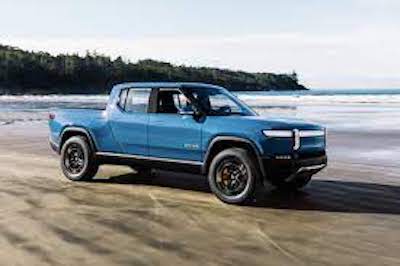
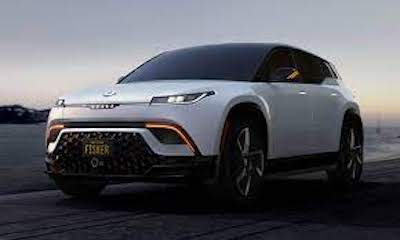
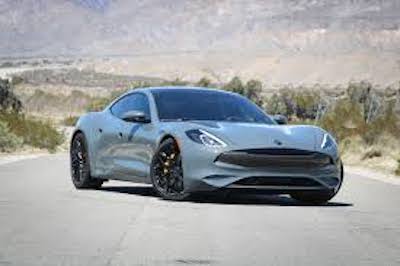
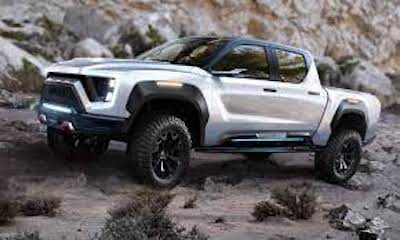

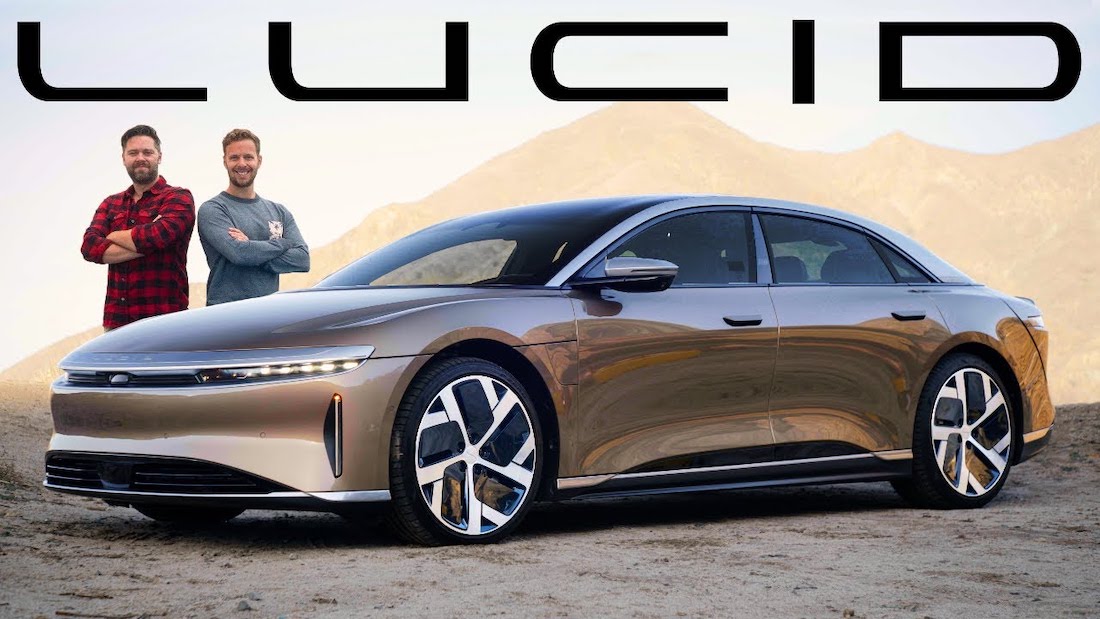
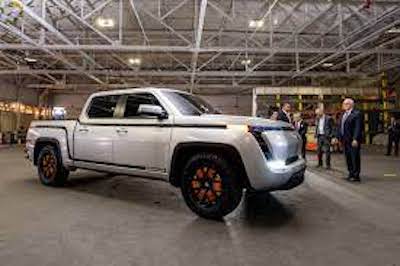
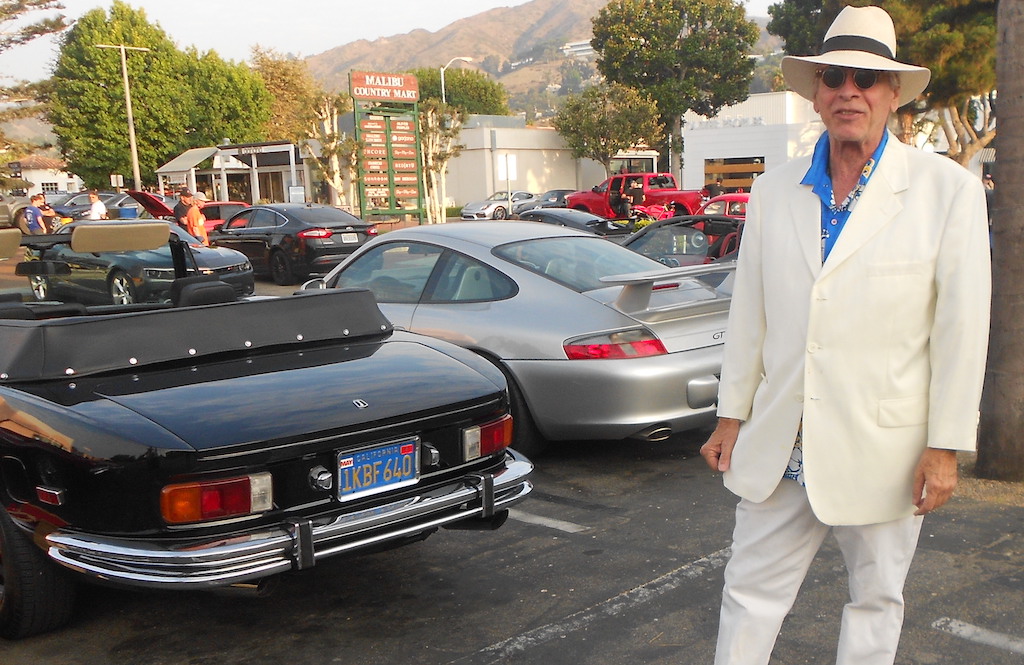
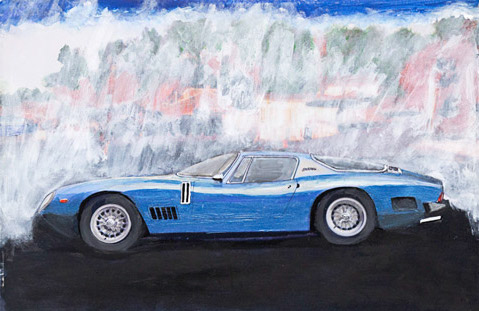

Wallace,
My girlfriend and I attended the New York International Auto Show this past Wednesday, the first one in two years Before I get to the related point, I just want to say that social media has affected this type of in-person event, as many companies who previously had pavilions there, had no presence whatsoever: Mercedes, BMW, Audi, Cadillac, GMC, and even Honda were not there!!!
A new, Vietnamese electric vehicle maker, Vinfast, had a huge area carved out for itself, but not many vehicles on display. “Vietnam’s automaker VinFast said on Tuesday it has signed a preliminary deal to initially invest $2 billion to build a factory in North Carolina to make electric buses, sport utility vehicles (SUVs) along with batteries for EVs. The unit of Vietnam’s biggest conglomerate Vingroup, said it plans to have a total investment of $4 billion in its first U.S. factory complex. Construction should begin this year as soon as the company gets necessary permits, and is expected to finish by July 2024”. This is quoted from a March 30th news release from Reuters, and naturally, North Carolina, not Michigan, is where they plan to build this factory..
The 3 or 4 vehicles they had at the show were long, sleek, crossover/wagon type vehicles. They could have easily had displayed another 8 vehicles with all the space they rented at the show! So, we’ll see where Vinfast ends up in this developing industry.
Thank you for the detailed analysis of the industry and the companies engaging in it.
Glenn in Brooklyn, NY.
Here is my girlfriend at the show in cars using ice engines:
A Dodge Challenger 392 Wide Body
A Lexus 500 Convertible
A Camaro Convertible
They didn’t all upload at once. The one above in the Camaro!
The one below is the Lexus.
That is actually me in the Lexus above!!!
The one below is my girlfriend in the Challenger!
Wallace,
I should add that after asking a lot of questions to the Vinfast sales rep, the summary was that Vinfast will follow the Tesla model, and do direct consumer sales of its vehicles. There will be no dealership network. They were actually taking deposits for vehicles at the show for those who were interested in purchasing their vehicles
Glenn in Brooklyn, NY..